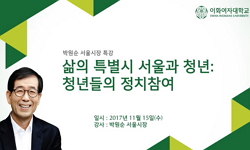In this thesis, it was analyzed how Seoul culture before/after the 4.19 Revolution was represented by newspaper serial novels, i.e. “Thinking reeds (1961-62),” “White night (1963-64),” and “Tomorrow will be windy and rainy (1965-66)” publi...
http://chineseinput.net/에서 pinyin(병음)방식으로 중국어를 변환할 수 있습니다.
변환된 중국어를 복사하여 사용하시면 됩니다.
- 中文 을 입력하시려면 zhongwen을 입력하시고 space를누르시면됩니다.
- 北京 을 입력하시려면 beijing을 입력하시고 space를 누르시면 됩니다.

1960년대 안수길의 신문 연재소설과 4·19혁명 전후(前後) 서울의 문화적 재현 양상 - 『생각하는 갈대』(1961~62), 『백야』(1963~64), 『내일은 풍우』(1965~66)를 중심으로- = Newspaper Serial Novels of Ahn Su-gil in the 1960s and Aspects of Cultural Representation in Seoul Before/after the 4.19 Revolution - Focused on “Thinking reeds (1961-62),” “White night (1963-64),” and “Tomorrow will be windy and rainy (1965-66)” -
한글로보기https://www.riss.kr/link?id=A108438553
- 저자
- 발행기관
- 학술지명
- 권호사항
-
발행연도
2022
-
작성언어
-
-
주제어
안수길 ; 신문연재소설 ; 4·19 ; 서울 ; 청계천 ; 시장 ; 공간 ; 금기 ; 한일협정 ; 문화 ; Ahn Su-gil ; Newspaper serial novels ; Seoul ; Cheonggyecheon ; Market ; Space ; Taboo ; Korea-Japan Agreement ; Culture ; Representation
-
KDC
700
-
등재정보
KCI등재
-
자료형태
학술저널
-
수록면
141-174(34쪽)
- DOI식별코드
- 제공처
-
0
상세조회 -
0
다운로드
부가정보
다국어 초록 (Multilingual Abstract)
In this thesis, it was analyzed how Seoul culture before/after the 4.19 Revolution was represented by newspaper serial novels, i.e. “Thinking reeds (1961-62),” “White night (1963-64),” and “Tomorrow will be windy and rainy (1965-66)” published in early-to-mid 1960s of Ahn Su-gil. The period from 1961 to 1966 when Ahn Su-gil’s works were published in the newspaper was the time that urban development of Seoul was not regularly started yet. However, specific cultures different from the times just after the Korean War were also generated during such period due to political upheavals such as 4.19, 5.16, and movement against the Korea-Japan Agreement. Through the novels during such period, Ahn Su-gil represented cultural amusement spaces in 1950-1960 represented by dance halls, bars, music halls, and coffee shops by narrating Seoul from 1954 when a ceasefire was determined, to 1966 when the movement against the Korea-Japan Agreement failed. Newspaper serial novels of Ahn Su-gil had the aspect to reveal that such spaces were linked with economic daily life in such places as Cheonggyecheon Market and political events such as 4.19 and the movement against the Korea-Japan Agreement. In the thesis, newspaper serial novels of Ahn Su-gil in early-to-mid 1960s were analyzed and it was analyzed how cultural changes of Seoul before/after the 4.19 Revolution was represented and how the sensibilities of characters in the novels were embodied to meet such changes.
동일학술지(권/호) 다른 논문
-
- 민족어문학회
- 남기현 ( Nam Ki-hyun )
- 2022
- KCI등재
-
知退堂 李廷馨의 16세기 士禍史 정리 작업과 그 의미 - 『黃兎記事』·『壽春雜記』를 중심으로-
- 민족어문학회
- 정용건 ( Chung Yong-gun )
- 2022
- KCI등재
-
19세기 여성 하위주체 강남홍의 열(烈)의 재전유와 그 의의
- 민족어문학회
- 유해인 ( Yoo Haein )
- 2022
- KCI등재
-
이태준 고전 담론과 『文章』의 낭만주의 -내간체의 발견과 〈춘향전〉의 귀환을 중심으로-
- 민족어문학회
- 박영재 ( Park Young-zae )
- 2022
- KCI등재




 KCI
KCI KISS
KISS






